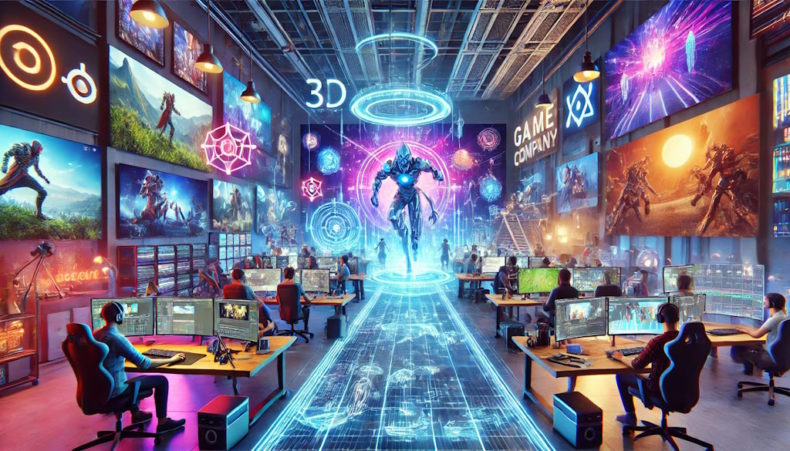Mobile gaming has revitalized retro gaming, significantly expanding opportunities for 2D game artists. This resurgence combines nostalgia with modern technology, creating innovative games appealing to experienced and new players. Mobile platforms are driving this transformation, empowering 2D game artists to spearhead this exciting evolution in gaming.
The Return of Retro Gaming
Cultural Nostalgia and Emotional Connections
The resurgence of retro gaming stems from a powerful combination of nostalgia and accessibility among players who grew up in the 1980s and 1990s. These nostalgic players yearn to relive their childhood and experience familiar aesthetics and gameplay mechanics. Classic titles like Super Mario, The Legend of Zelda, and Sonic the Hedgehog have created lasting emotional connections with such players. This demographic now represents a significant portion of the gaming market, driving demand for remakes and original titles inspired by retro aesthetics. It is interesting to note that these games have also sparked curiosity among younger audiences.
Simplicity and Accessibility
Mobile platforms create a perfect setting for retro-style games, allowing brief gaming experiences to be seamlessly integrated into everyday life. The straightforward gameplay mechanics typical of retro games complement the mobile gaming format, designed for easy access during brief intervals or while commuting.
Many retro-themed mobile games are crafted for quick play, reflecting the arcade vibe of fast-paced, enjoyable moments. This ease of access broadens their attraction to a wide range of players.
Creative Freedom for 2D Artists
Mobile game development has become a creative haven for 2D game artists, removing traditional constraints in larger gaming studios. This environment fosters experimentation with diverse art styles, gameplay mechanics, and storytelling approaches. Independent development platforms have made it possible for artists to reach global audiences without requiring major publisher support. Platforms like the App Store and Google Play facilitate direct audience access, bypassing traditional publishing barriers.
Artists now have the freedom to explore various visual styles, from classic pixel art to hand-drawn graphics, while maintaining the essence of retro gaming. This creative liberty results in unique gameplay experiences that honor gaming history and push creative boundaries.
Modernization of Classic Gaming
The mobile platform allows developers to revamp classic games while keeping their original charm intact. Improved graphics can now cater to high-resolution screens while still retaining the unique pixelated style that characterizes retro gaming. Innovative methods such as parallax scrolling introduce depth to backgrounds, resulting in visually engaging settings that do not sacrifice the nostalgic essence.
Touch controls have revolutionized how players interact with retro-style games, offering intuitive interfaces that adapt classic control schemes to modern devices. Additionally, contemporary features such as achievements, leaderboards, and social sharing capabilities enhance the gaming experience while respecting traditional gameplay elements.
Additional features include incorporating achievements, leaderboards, and social sharing; this enriches gameplay while remaining true to the retro ethos.
Technological Advancements
Emulators and Remakes
Modern technology has played a crucial role in the accessibility of retro gaming. Emulation software allows players to experience classic games on current devices, while cloud gaming services enable cross-platform play without requiring powerful hardware. These developments have made retro gaming more accessible than ever before.
Developers are revitalizing classic games with updated visuals and soundtracks while preserving core gameplay elements. For example, titles like The Legend of Zelda: Link’s Awakening blend nostalgia with modern enhancements to attract diverse audiences.
Cloud Gaming Technology
Cloud gaming is reshaping access to retro games by eliminating hardware barriers:
- Cross-Platform Play: Players can enjoy retro titles across devices without needing advanced hardware, expanding the audience for classic games.
- Seamless Progression: Cloud saving allows players to sync progress across devices, ensuring uninterrupted gameplay regardless of the platform.
Impact on Game Development Trends
Indie Game Development Boom
The resurgence of retro gaming has created a robust ecosystem for indie game development, opening significant opportunities for 2D artists.
- Crowdfunding Success: Modern crowdfunding platforms like Kickstarter empower indie developers to secure direct project funding while building an invested community of backers actively participating in the development journey.
- Community Collaboration: Using social media platforms and gaming forums strategically, developers establish meaningful connections with their player base, incorporating valuable feedback and fostering dedicated gaming communities that drive project success.
Aesthetic Influence on New Releases
Retro aesthetics continue to shape and influence contemporary mobile game development:
- Pixel Art Revival: The renaissance of pixel art has transformed modern game design, as artists masterfully blend traditional techniques with contemporary design principles to create visually compelling gaming experiences.
- Genre Blending: Modern developers expertly fuse different gaming genres, particularly platformers, with RPG elements, creating sophisticated hybrid experiences that bridge nostalgic appeal with modern gaming preferences. Games like Stardew Valley exemplify this successful evolution in game design.
Future Developments
Advanced Graphics and Sound: The mobile retro gaming landscape is poised for significant advancement through emerging technologies. New rendering techniques will enable pixel art to incorporate dynamic lighting and high-resolution effects, creating visually stunning environments while preserving nostalgic appeal. These developments allow artists to craft worlds that honor classic gaming aesthetics while embracing modern capabilities.
Audio design will similarly evolve, with enhanced technology enabling rich soundscapes that blend traditional chiptune styles with contemporary orchestral arrangements. This fusion will provide immersive experiences that complement the enhanced visual elements of modern retro games.
Multiplayer and Community Features: The social dimension of retro gaming will expand through integrated multiplayer features. Developers can create cooperative experiences reminiscent of classic arcade games, fostering community engagement. Competitive elements like sophisticated leaderboard systems and matchmaking capabilities will add new layers to traditional gameplay, encouraging friendly rivalry among players.
Sustained Indie Innovation: The indie development scene drives innovation in retro gaming. Independent creators experiment with unique storytelling approaches and diverse visual styles, challenging conventional gaming narratives. Their willingness to take creative risks results in fresh perspectives on familiar themes, breathing new life into retro-inspired games.
Conclusion
As more artists enter this space, the variety of artistic expressions grows. Some developers combine hand-drawn elements with pixel art, while others experiment with mixed media approaches. This diversity ensures that retro-inspired mobile games will continue to evolve while maintaining their connection to gaming’s heritage.
Frequently Asked Questions
1. What drives the popularity of retro-style mobile games?
The combination of nostalgia, accessible gameplay mechanics, and the convenience of mobile platforms makes retro-style games particularly appealing to longtime gamers and new players.
2. How has mobile technology improved retro game development?
Mobile platforms offer enhanced graphics capabilities, intuitive touch controls, and various modern features while maintaining the classic appeal of retro games.
3. Why are indie developers drawn to retro-style game development?
The lower technical requirements, creative freedom, and strong market demand make retro-style game development an attractive option for independent creators.
4. How do modern features enhance retro gaming experiences?
Features like achievements, online leaderboards, and social sharing options add new layers of engagement to classic gameplay formulas while preserving their core appeal.
5. What role does pixel art play in modern mobile gaming?
Pixel art serves as a nostalgic element and a distinct artistic style, allowing developers to create visually appealing games that honor gaming history while incorporating modern design principles.
6. How has mobile gaming influenced retro game distribution?
Mobile platforms have made retro-style games more accessible to global audiences, enabling developers to reach players directly through digital marketplaces without traditional publishing constraints.





